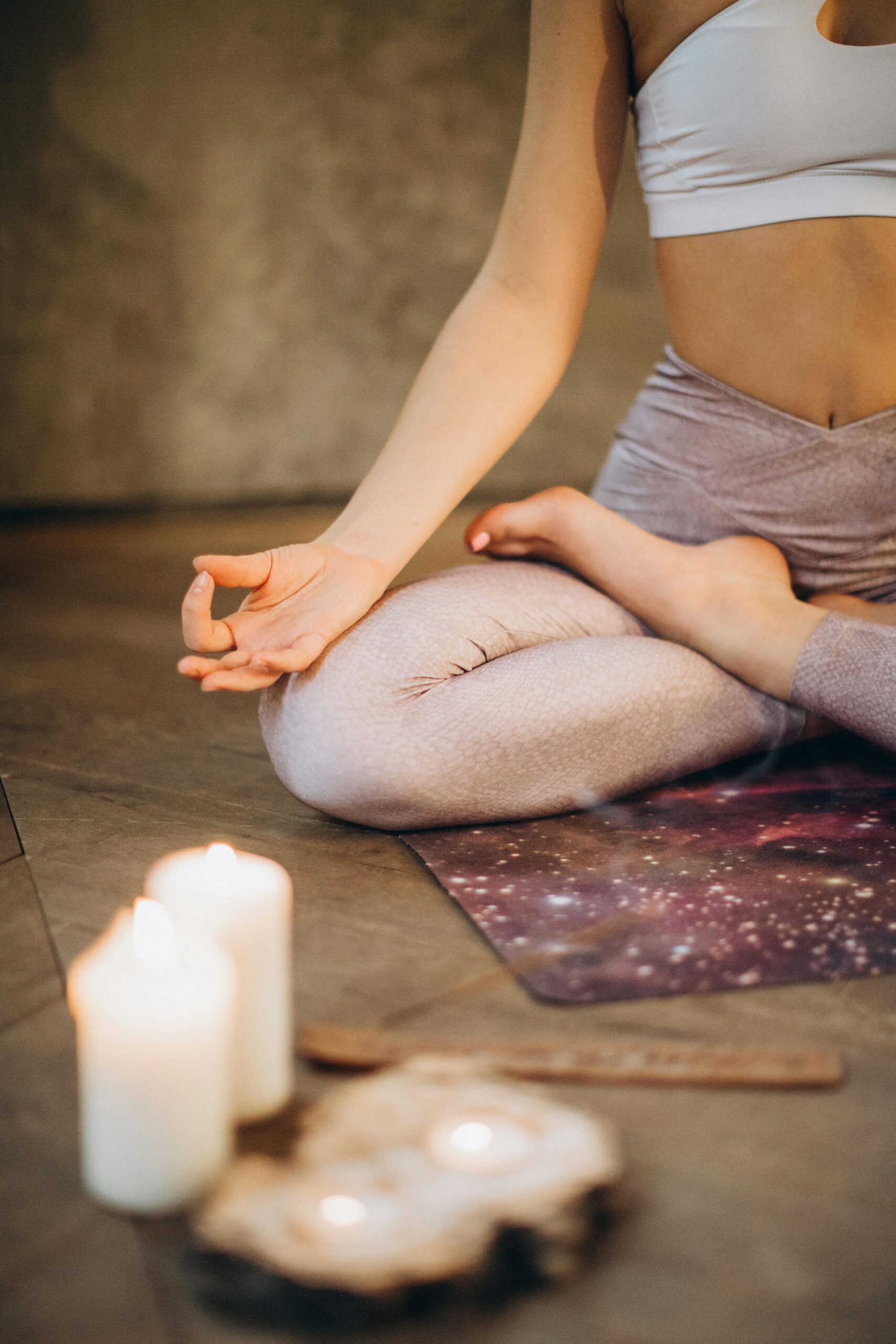
This article highlights the transformative benefits of incorporating yoga and meditation into your daily routine, from reducing stress to improving overall health. Simple practices can bring peace, clarity, and vitality to your mind and body.

In today’s fast-paced world, it is easy to feel overwhelmed, stressed, and disconnected from our own well-being. Between work pressures, personal challenges, and the constant bombardment of information, finding time to relax or center ourselves can seem like a luxury. However, incorporating practices like meditation and yoga into our daily routine can be incredibly beneficial for both the mind and body.
These two practices, which have been around for thousands of years, have proven to offer profound benefits, from reducing stress to improving physical health. In this article, we will explore what meditation and yoga do, why they should be part of our daily lives, and what they can bring to our overall well-being.

What is Meditation?
Meditation is a practice where an individual uses a technique – such as mindfulness, focus, or concentration – to train the mind to become more aware and calm. It often involves sitting in a quiet space, closing your eyes, and focusing on your breath or a specific thought, sound, or mantra. The goal is to quiet the chatter of the mind and bring your focus to the present moment.
Meditation can be practiced in many different forms, including mindfulness meditation, guided meditation, loving-kindness meditation, and transcendental meditation. Though each has its own approach, all forms of meditation share one common purpose: to foster mental clarity, reduce stress, and increase emotional resilience.
What is Yoga?
Yoga is a physical, mental, and spiritual practice that originated in ancient India. It involves a series of postures, breathing exercises, and meditation techniques designed to strengthen and stretch the body, while calming and focusing the mind.
There are many different styles of yoga, from gentle forms like Hatha yoga, to more intense practices such as Vinyasa or Ashtanga yoga. Each style incorporates different poses and movements, but all share the goal of enhancing physical flexibility, building strength, and promoting inner peace.
The Benefits of Adding Meditation and Yoga to Your Daily Life
1. Reduces Stress and Anxiety
One of the most well-known benefits of both meditation and yoga is their ability to reduce stress. In a world full of distractions and high demands, it can be hard to relax. However, yoga helps you slow down and focus on your body and breath, which naturally reduces tension and calms the nervous system.
Meditation, similarly, helps you create mental space away from external worries. By focusing on your breath or an object, you shift your attention away from stressful thoughts. This ability to focus on the present moment can reduce the rumination that often leads to anxiety and depression.
Both yoga and meditation activate the parasympathetic nervous system, the part of the body responsible for the “rest and digest” response, which helps counteract the fight-or-flight reaction triggered by stress. This can help you feel more grounded, peaceful, and at ease.
2. Improves Physical Health
Yoga offers numerous physical benefits, making it a great complement to a fitness routine. Many yoga poses help improve flexibility, strength, and balance. For example, poses like Downward Dog and Warrior strengthen the arms and legs, while poses like Child’s Pose and Forward Fold stretch the spine and hamstrings.
Regular yoga practice can also improve posture and alleviate pain, particularly in areas such as the back, neck, and shoulders. This is especially beneficial for people who spend long hours sitting at desks or working in positions that put strain on the body. In addition, yoga enhances the body’s circulation, which supports better heart health and overall vitality.
On the other hand, meditation improves physical health indirectly by lowering stress hormones like cortisol. Chronic stress is linked to a variety of health issues, including high blood pressure, digestive problems, and weakened immune systems. By reducing stress, meditation helps to mitigate these risks and improve overall health.
3. Enhances Mental Clarity and Focus
Both yoga and meditation have the power to enhance mental clarity and focus. Meditation trains the mind to concentrate on one point of focus, whether it’s your breath, a mantra, or a visualization. This practice of narrowing your attention helps you strengthen your ability to concentrate in everyday tasks as well, which can improve your productivity and decision-making.
Similarly, yoga requires you to be present and engaged with your body. The coordination of breath and movement in each posture keeps you focused on the task at hand, which can translate into better mental clarity off the mat.
By incorporating meditation and yoga into your daily life, you can sharpen your ability to focus, make clearer decisions, and be more mindful of your actions and thoughts.
4. Promotes Emotional Well-being
Meditation and yoga are known to have a positive impact on emotional health. When we experience stress, our emotions can become overwhelming, leading to frustration, irritability, or sadness. Both practices teach us to observe our thoughts and feelings without judgment, creating space for emotional awareness and growth.
Through yoga, we develop an increased sense of self-awareness. We learn to listen to our bodies, recognize when we are tense, and consciously release those tensions. This awareness extends to our emotional state, enabling us to manage negative emotions more effectively.
Meditation cultivates mindfulness, which helps us notice how our emotions arise and pass without becoming overly attached to them. This practice can lead to improved emotional regulation, allowing us to respond to life’s challenges with a greater sense of balance.
5. Improves Sleep Quality
One of the most common issues people face today is poor sleep. Between stress, anxiety, and our overactive minds, many of us struggle to fall asleep or stay asleep. Fortunately, meditation and yoga can improve the quality of sleep by calming the mind and reducing physical tension.
Gentle yoga poses, particularly those focused on stretching and relaxation, can help prepare the body for rest. Similarly, meditation before bed can help calm racing thoughts and ease the transition into sleep. Both practices promote relaxation by activating the body’s parasympathetic nervous system, which encourages restful sleep.
6. Fosters a Deeper Connection to Yourself
In our busy lives, it is easy to lose touch with ourselves and our true needs. Meditation and yoga offer an opportunity to reconnect with your inner self. By taking time to listen to your body and mind, you become more attuned to your emotions, thoughts, and physical sensations. This can help you understand what you truly need to live a balanced and fulfilling life.
Through yoga, you learn to respect and honor your body. Each posture offers an opportunity to connect with yourself and your breath, while meditation helps you develop inner peace and clarity. Both practices encourage self-love, self-acceptance, and a deeper understanding of your own needs.
How to Incorporate Meditation and Yoga into Your Daily Routine
You don’t need hours of free time to enjoy the benefits of yoga and meditation. Here are some simple ways to start incorporating these practices into your daily life:
-
Start Small: You don’t need to commit to an hour-long yoga session or a 30-minute meditation right away. Start with just 5-10 minutes a day and gradually increase the duration as you feel comfortable.
-
Create a Routine: Consistency is key. Try to practice yoga and meditation at the same time each day, whether it’s in the morning, during your lunch break, or before bed.
-
Set Up a Quiet Space: Find a peaceful corner in your home where you can practice without distractions. A quiet, calming space will help you get into the right mindset.
-
Use Online Resources: There are plenty of apps, videos, and guides available to help you get started with both yoga and meditation. You can use them to follow along with classes or guided sessions.
-
Listen to Your Body and Mind: Yoga is about moving at your own pace. Don’t push yourself too hard. Similarly, meditation is not about “clearing” your mind entirely, but rather becoming aware of your thoughts without judgment.
Incorporating meditation and yoga into your daily life can be a game-changer for your overall well-being. From reducing stress and anxiety to improving physical health and emotional resilience, the benefits are clear. While these practices take time to master, the rewards are well worth the effort. Start small, stay consistent, and watch how meditation and yoga transform your life into one that is more centered, balanced, and peaceful.
- Earn Passive Income: Build a Baseball eBook for Families - August 4, 2025
- Turn Your First $1K Baseball Hustle Cash Into Wealth - August 4, 2025
- $10K/Month Baseball Academy? Setup & Revenue Blueprint - August 1, 2025
About the Author
Informed Era
Administrator
I’m Gaurav Negi, the writer and creator behind Informed Era. With over 5 years of experience in writing, I’m dedicated to providing clear, insightful, and valuable content on a variety of topics. My passion is helping you stay informed and make better decisions with well-researched information. Thanks for stopping by—let’s dive into the world of knowledge together!






